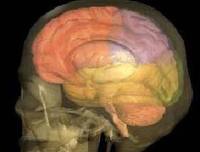Scientists from German’s Max Planck institute have demonstrated that it could be possible to ‘read’ and even record what people are dreaming about.
People tend to forget their dreams when they wake up. Most of us remember only a tiny fraction of our dreams, but that could soon change.
With the use of computers it is possible to see people’s dreams and what they are dreaming about and perhaps even record dreams to watch it later.
It means that recent breakthroughs in ‘reading’ the thoughts of waking subjects using brain monitors could apply to dreamers too.
Psychiatrists at the Max Planck Institute in Munich, Germany think have already demonstrated that brain scanners can see into the dreams of ‘lucid dreamers’, people who can control their dreams.
The lucid dreamers agreed to move their eyes and hands from side to side to show the researchers the moments they ‘controlled’ their dreams to dream about clutching a hand.
The scientists monitored the dreamers with both magnetic resonance imaging and near-infrared spectroscopy to see patterns of heat in their subject’s heads, which gives a picture of brain activity.
The dreamers did not clench their hands while they dreamt – but the scans of their brains showed identical brain activity when they clenched a real hand, and when they clenched a dream hand.
So far, the Planck institute scientists have reconstructed just two dreams. The number of scanners, and the difficulty of controlling dreams, has meant that the experiment was extremely difficult.
The participants have to fall asleep in a scanner, reach REM sleep and enter a stable lucid dream state,’ says Michael Czisch.
This is a proof-of concept study and provides the first evidence that it may be possible to use brain imaging to read the contents of a person’s dream,’ Czisch told New Scientist.
They converted this information into visual patterns after feeding it through a computer filled with video clips, in a process which scientists say ‘opens a window into the movie of our minds’.
Earlier this year, academics from the University of California, Berkeley, managed to decipher brain activity by measuring blood flow through the brain’s visual cortex, and used this information to construct images of what they were ‘thinking’.
Professor Jack Gallant, a UC Berkeley neuroscientist, said: ‘This is a major leap toward towards reconstructing internal imagery.’
The technology can only recognize and reconstruct movie clips shown to the test subjects before they braved the scanner.
